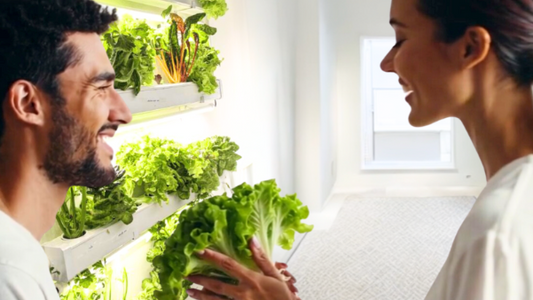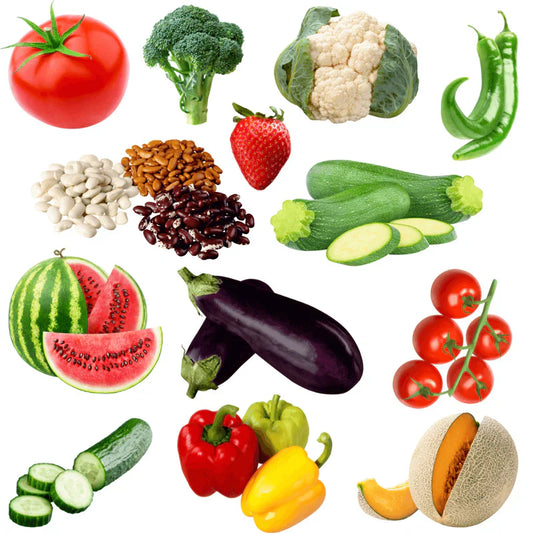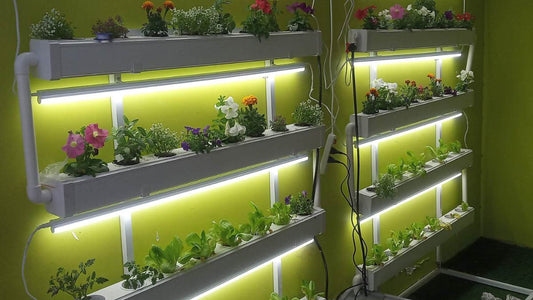Welcome to the world of hydroponic gardening! Far more than a fleeting trend, this innovative approach to cultivating plants presents a significant shift towards sustainable, space-efficient farming.
But there's something even more exciting about hydroponics that's capturing the hearts of home gardeners worldwide. Beyond its practical benefits, this soil-less cultivation method stands out for its remarkable ability to yield nutritionally superior fruits and vegetables.
In this article, we’ll explore why this method is a healthier choice for our plates and palates. Whether you're a seasoned gardener or a curious newbie, join us as we uncover the nutritional secrets of this gardening marvel.
The Science of Nutrient Solutions in Hydroponics
Hydroponics revolutionizes gardening by using nutrient solutions – merging water with essential minerals for direct plant feeding. Unlike traditional soil-based cultivation, where nutrients are absorbed indirectly, hydroponics allows for precise control over the nutritional intake of the plants. This direct absorption enhances growth efficiency and boosts the nutritional density of the produce.
For home gardeners, this means an empowering ability to fine-tune nutrient mixes, ensuring that your tomatoes, lettuce, or strawberries are rich in their characteristic vitamins and minerals. By optimizing nutrient levels, like magnesium for leafy greens or calcium for fruits, hydroponics yields a harvest that's fresher and nutritionally superior to soil-grown counterparts.


Benefits of a Controlled Environment
Hydroponics takes gardening to the next level by offering complete control over the growing environment. Unlike traditional gardening, which battles unpredictable weather, varying soil conditions, and unwanted pests, hydroponics puts you in the driver's seat, allowing for meticulous control over these variables.
With the ability to fine-tune light, temperature, and humidity, you can foster the ideal environment for your plants, leading to faster growth and supercharged nutritional value. For instance, controlled light exposure can increase antioxidants in greens, and stable temperatures can enhance vitamins in produce. Hydroponics isn’t just about growing more; it’s about growing smarter, resulting in nutritionally superior produce.


Freshness and Nutritional Content
The saying "fresh is best" rings especially true with hydroponically grown produce. When you grow vegetables and fruits at home, you're likely to consume them shortly after harvesting, which is crucial for maintaining their nutritional value. In hydroponic systems, plants are harvested at peak ripeness, ensuring most nutrients are retained.
Vitamins such as C and A, essential for health but sensitive to degradation over time, are preserved far better in hydroponically grown produce due to this freshness. Additionally, the absence of a long transportation process, common with store-bought produce, means that your home-grown fruits and vegetables maintain their nutritional integrity from the plant to your plate.



The Advantage of Chemical-Free Growth
A significant benefit of hydroponics is its inherently chemical-free nature. Unlike traditional farming, hydroponic systems usually do not require pesticides or herbicides, as the controlled environment significantly reduces the occurrence of pests and diseases. This means the produce is healthier and free from potentially harmful chemical residues found in conventionally grown fruits and vegetables.
For health-conscious families and individuals, this translates into a cleaner, more wholesome harvest, ensuring you receive the full nutritional benefits of your fruits and vegetables without the risk of ingesting harmful substances.



Practical Tips for Maximizing Nutrition in Home Hydroponic Gardens
To make the most of your hydroponic system's nutritional benefits, here are some practical tips:
- Regularly test and adjust nutrient solutions to ensure your plants receive the right balance of nutrients, promoting optimal growth.
- Monitor environmental factors like light, temperature, and humidity and adjust them to create the ideal growing conditions for each plant.
- Harvest your produce at peak ripeness to ensure maximum nutrient retention when the concentration of vitamins and minerals is at its highest.
- Regularly clean and maintain your hydroponic system to prevent the buildup of harmful bacteria and ensure efficient operation, which is crucial for healthy plant growth.

Embracing the Future of Nutrition with Hydroponics
Hydroponic gardening is more than a modern trend – it's a key to unlocking a world of robust health and sustainable practices. This innovative method isn't just about saving space or being eco-friendly; it revolutionizes how we access nutrition-packed produce.
Embrace hydroponics, and you're not just gardening; you're stepping into a future where every bite is fresher, cleaner, and bursting with nutritional benefits.
Ready to get started? Check out our selection of home hydroponic kits, or connect with us for expert assistance. Discover the incredible world of hydroponics and transform your approach to health and gardening.
Why Nature Tech?
- Our hydroponic systems save up to 90% more water than traditional growing methods.
- All hydroponic growing systems are designed for modern life with maximum yield, minimum effort, and endless beauty & joy.
- Our systems are made of food-safe plastics that don't contaminate the water with unhealthy compounds.
- Our compact and adaptable set-up can be used in large indoor spaces or a small balcony – wherever you choose, your plants will flourish.
- Our home-growing systems are easy to use - even for beginner gardeners!
- With our systems, your plants grow up to 3x faster than in soil, so you’ll save more time!
- We’re here to offer help every step of the way. If you need advice or have any doubts, feel free to reach out to us!




